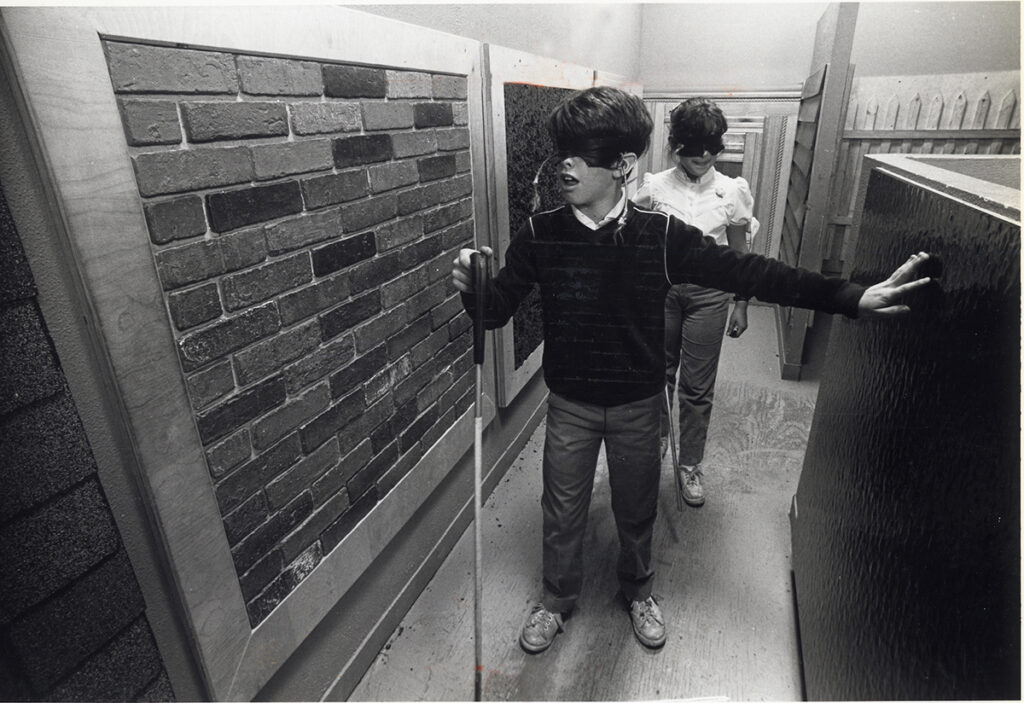
Boston Children’s Museum has been a national leader in creating exhibits and programs that address the challenges faced by those with special needs. In 1974, the Museum created the landmark exhibit What if You Couldn’t? that became a national model for promoting understanding of special needs. The goals of the exhibit were to enable visitors to experience disability in some fashion; experience tools or skills that remediate its effects; and provide a basic explanation of the disability, and make some suggestions about courtesy and communication with people who have a disability.
The exhibit touched upon visual impairments, hearing impairments, emotional problems, learning disabilities, developmental issues and physical disabilities. Visitors could handle a prosthetic arm or a leg brace, try out a wheelchair, use a brailler, look through some lenses to see what 20/200 or 20/400 vision is like, learn some sign language, or try some figure/foreground puzzles. Kids could learn that there is an American Sign Language sign for every letter in the alphabet, or that disabilities aren’t “catching.” Parents could read that most people who are deaf can lip read, so look directly at the person you are addressing, speak clearly and don’t bother yelling, or that most people who use wheelchairs prefer to be addressed directly as well, and basically treated just as you would treat anyone else.
